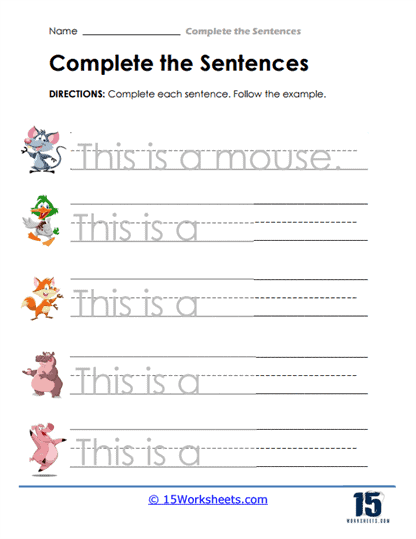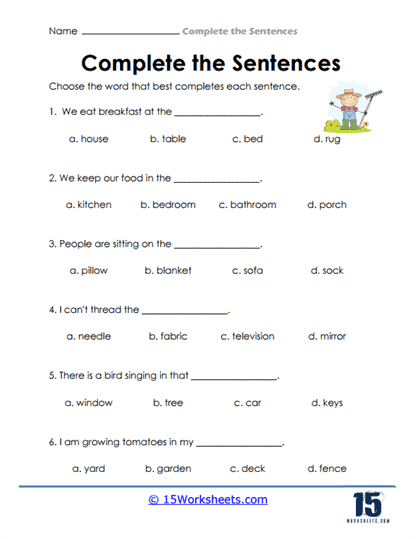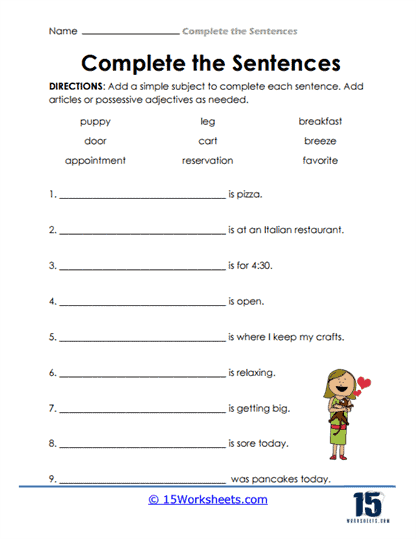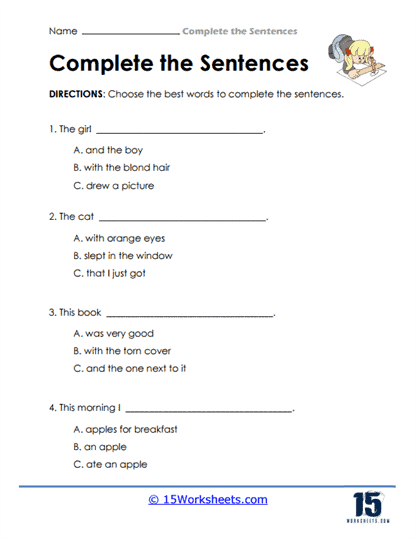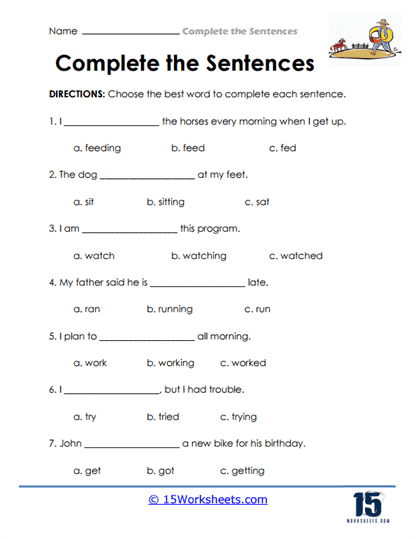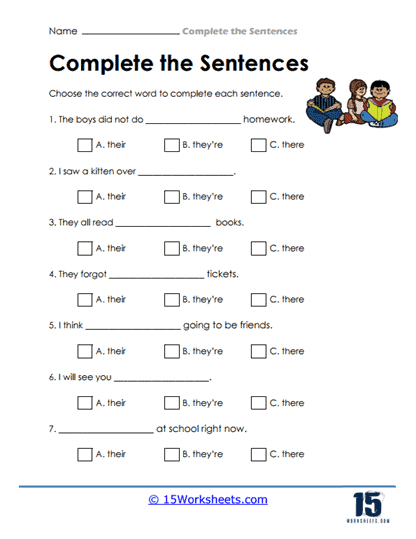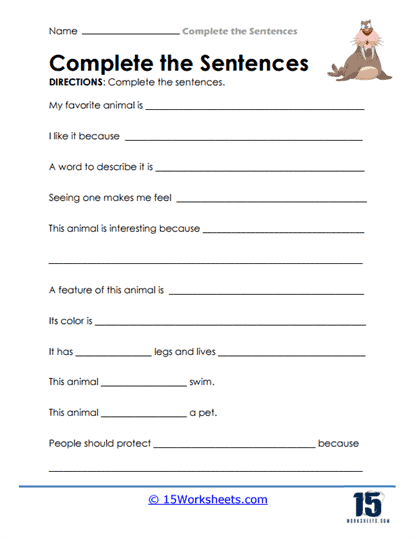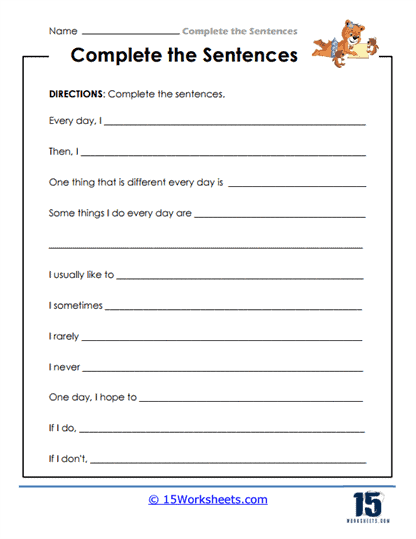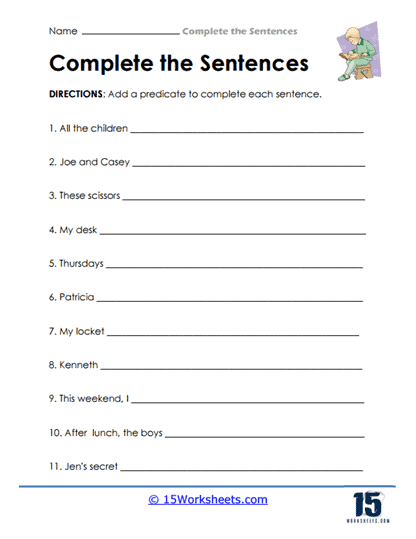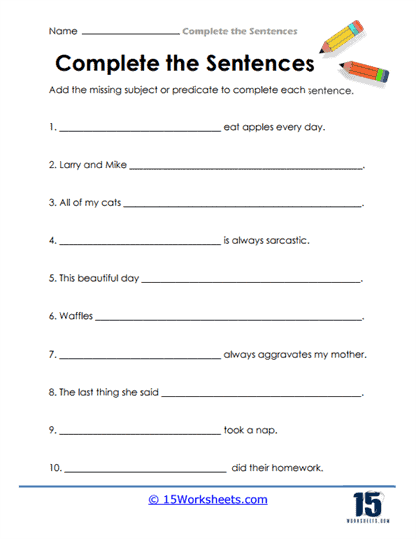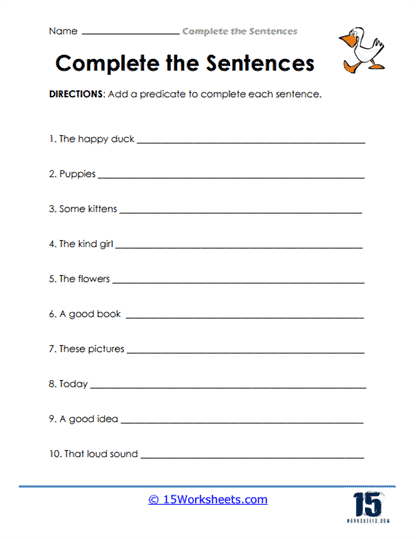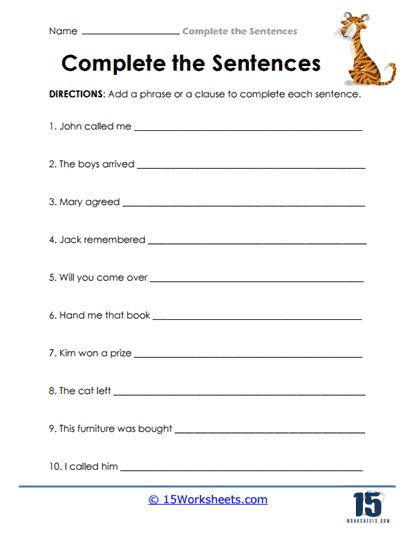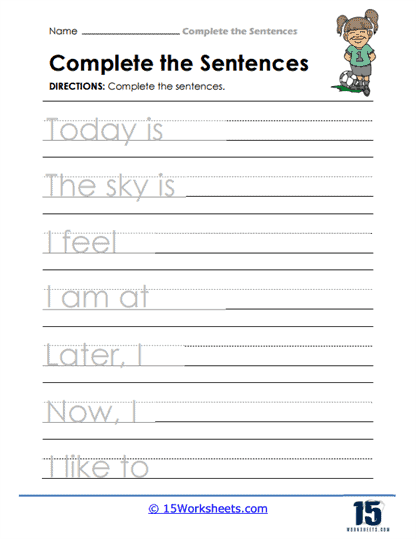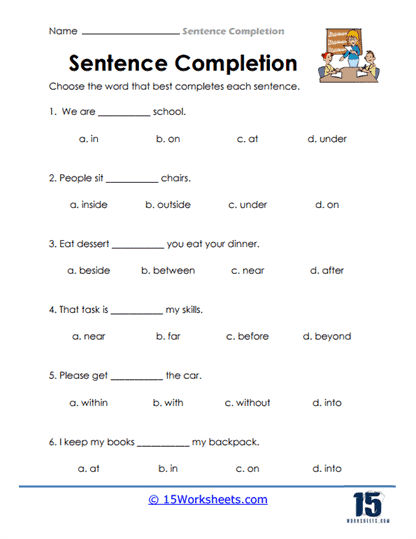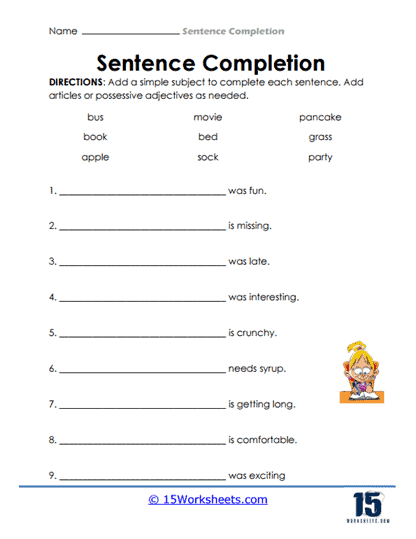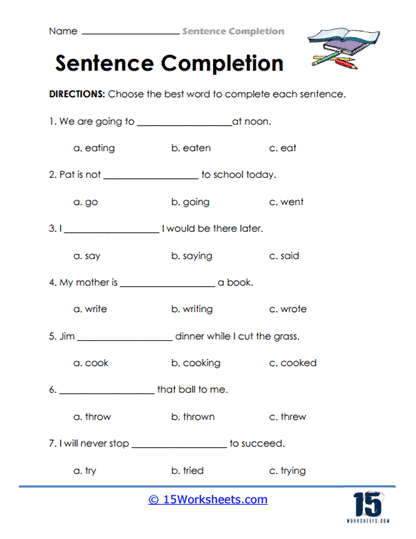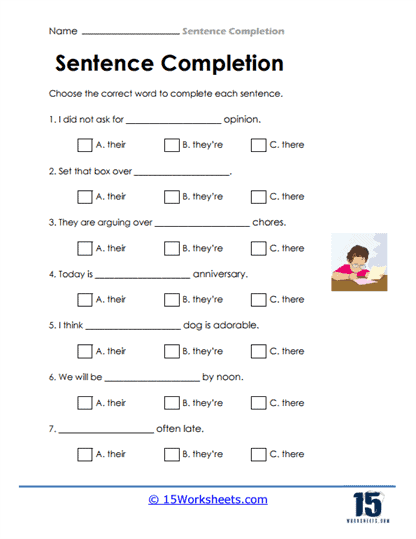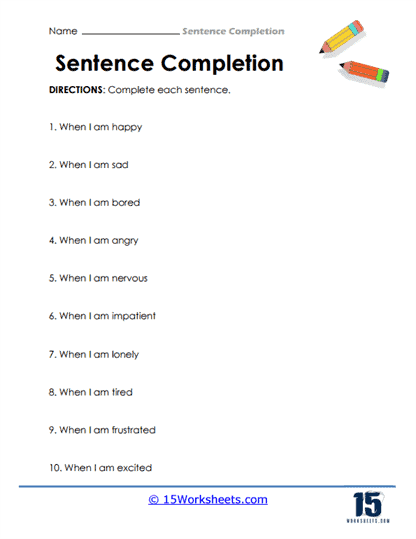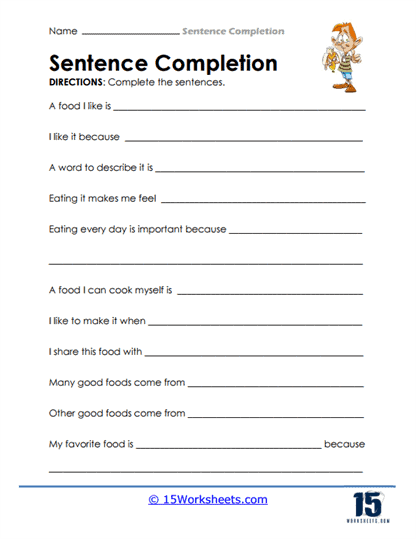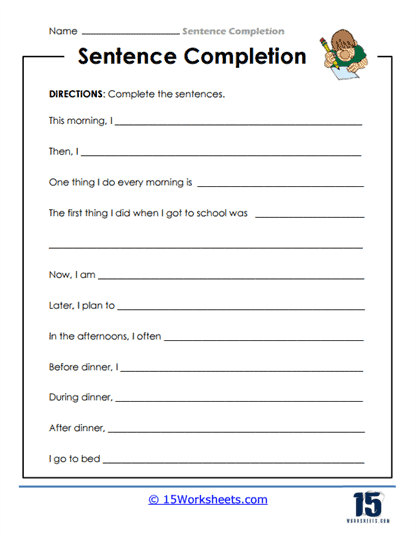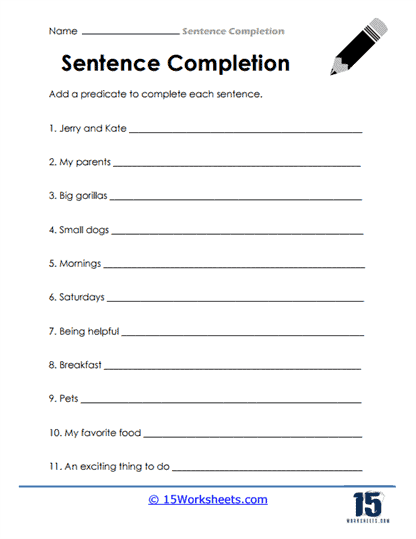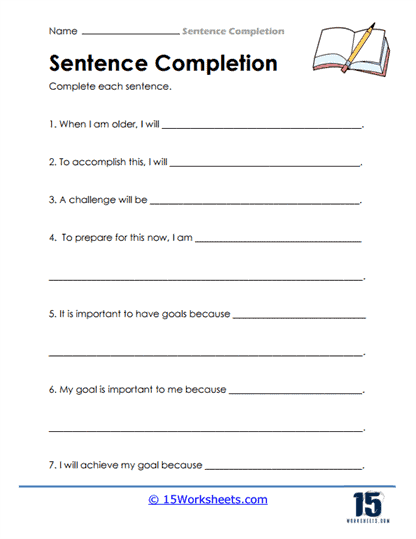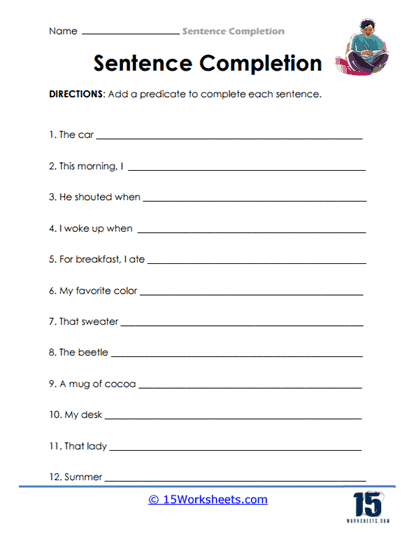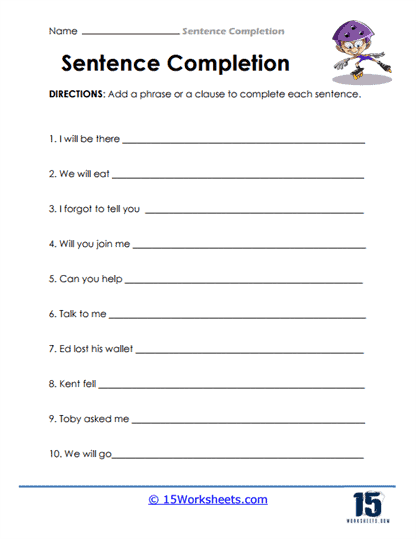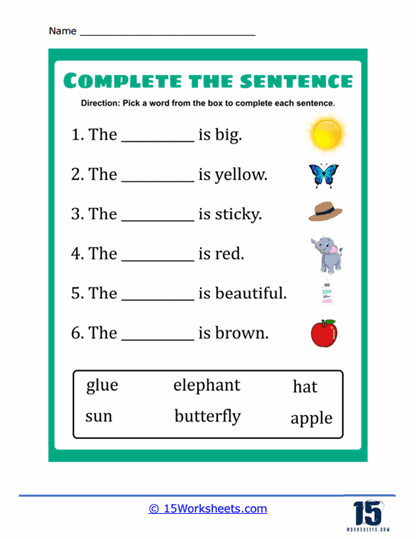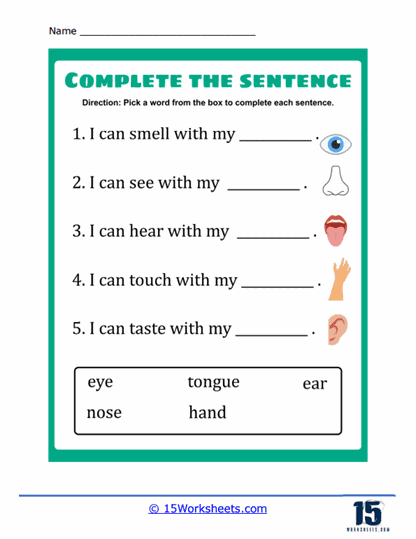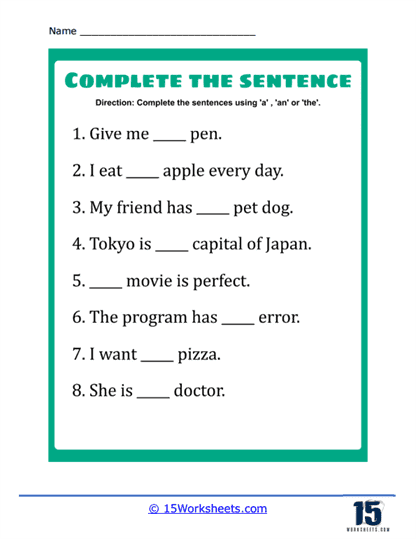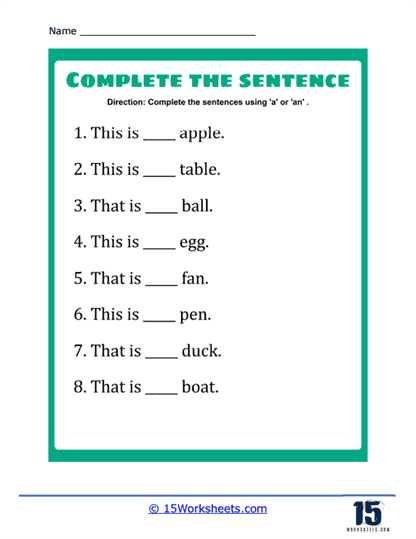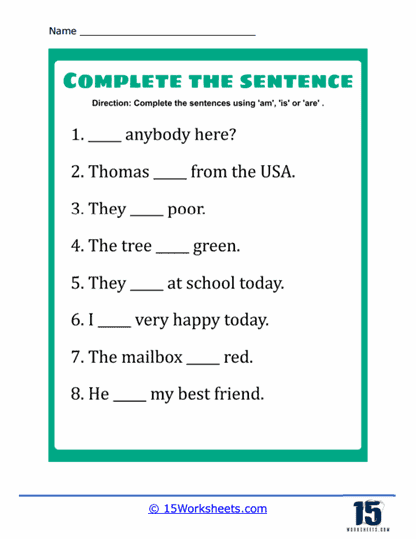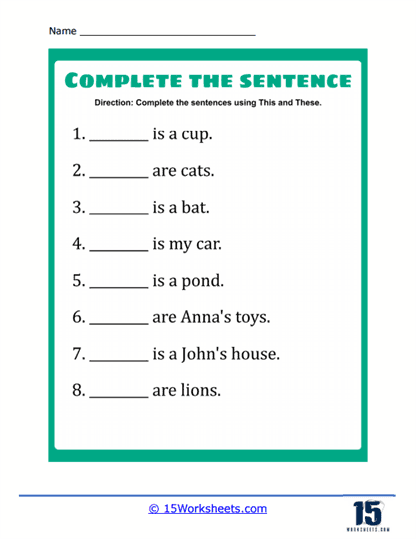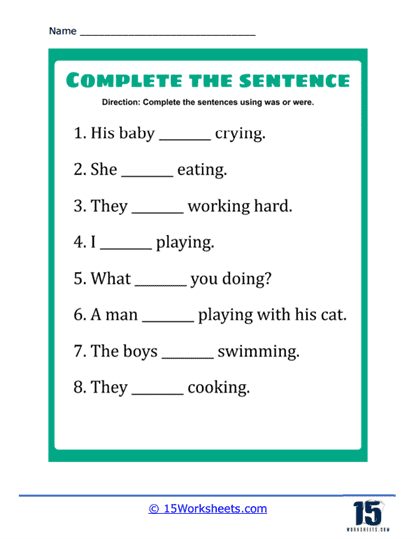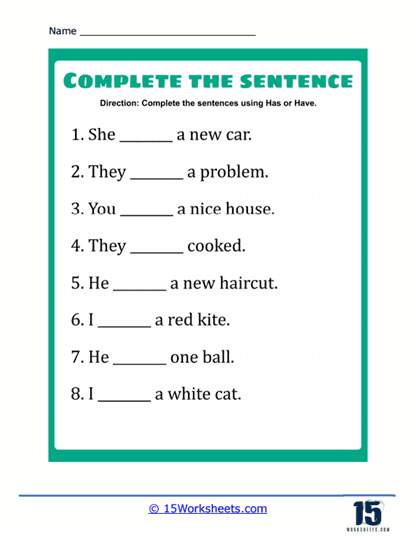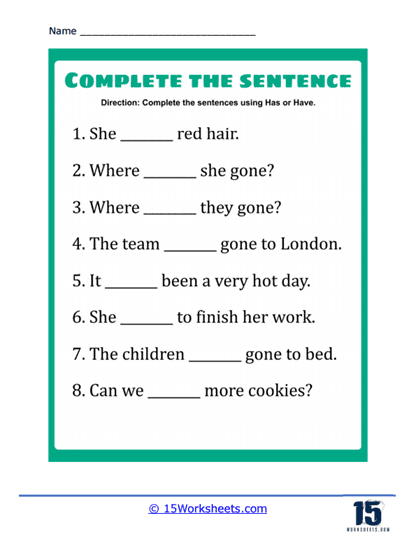Complete the Sentence Worksheets
All About These 15 Worksheets
These worksheets are thoughtfully designed to help students deepen their understanding of fundamental grammar rules through a structured, interactive format. Each worksheet presents partially completed sentences with missing words or phrases, encouraging students to actively engage with the material by filling in the blanks with the correct grammatical components.
What sets these worksheets apart is their clear, purposeful layout. Instructions are concise and easy to follow, guiding students to select appropriate words from a provided list. Some activities require students to choose from pairs or groups of words-each carefully selected to highlight specific grammatical concepts. These might include articles (“a,” “an,” “the”), auxiliary (helping) verbs, the correct use of “has” and “have,” or demonstrative pronouns such as “this” and “these.”
The progression of exercises ensures that students are not simply guessing, but thinking critically about how grammar functions within real sentence structures. By completing these tasks, learners reinforce the rules of grammar in context, which strengthens both their comprehension and retention.
By merging clarity with challenge, these worksheets serve as a bridge between understanding grammar in theory and applying it effectively in writing. Whether used in the classroom or at home, they offer a reliable path toward language proficiency for learners at foundational levels.
A Look At Individual Worksheets
Whether you’re a sentence-savvy student or a teacher trying to convince kids that “verb agreement” isn’t just a really boring wedding ceremony, this collection has something for everyone. The journey begins simply enough with worksheets like Color Words and Follow the Example, where students ease into the world of sentence completion like tiptoeing into a warm bubble bath. Then it gets serious-well, as serious as you can get when “The Missing Noun” isn’t a criminal case, but an educational opportunity.
Next up, the plot thickens. With worksheets like Adding Simple Subjects, Phonetic Fun, and Missing Phrases, students encounter that magical moment when a sentence goes from “meh” to “meaningful.” The Correct Verb Form swoops in like a superhero, rescuing poor, confused subjects from mismatched action words. And just when they think they’re getting the hang of it, Fun With Homophones crashes the party, making students realize that “their,” “they’re,” and “there” aren’t just different spellings for “why is English so hard?”
Animal lovers, rejoice! Worksheets like My Favorite Animal and All About Animals give students a chance to profess their love for sloths, llamas, or imaginary creatures named Fluffernutter. Meanwhile, Habitual Language Adventure invites kids to explore the thrilling world of things they do every day – like brushing teeth or asking for Wi-Fi passwords. The stakes are raised with Sentence Builder with Predicates and Subject-Predicate Puzzles, as kids realize a sentence without a predicate is like a pizza without cheese – technically possible, but why would you?
In the twisty-turny middle chapters of this grammar odyssey, students meet the big leagues: Adding a Predicate, Phrase and Clause Power, and the poetic-sounding Today, Skies, and Feelings (which, incidentally, is also the title of my upcoming indie folk album). Linking Pictures and Sentences challenges students to find the delicate thread that ties images and words together, while Position Precision teaches them that “on the table” is not the same as “under the dog.” And just when their confidence is peaking, The Subject Quest and Conquer the Verbs arrive like boss levels in a video game – think of them as the grammar equivalent of fighting a dragon armed only with a pencil and a well-placed adverb.
For those fascinated by the chaos of homophones and feelings (honestly, who isn’t?), Navigating Homophones and Feeling Filler promise all the joy of sentence ambiguity. Culinary Conversations serves up delicious dialogue with a side of sentence structure, and From Dawn to Dusk reminds students that good grammar, like breakfast cereal, is for any time of day. Falling for Predicates may sound like a rom-com, but it’s more about the dramatic entanglement of action and clarity. Me, Myself, and Sentences is where things get introspective – because sometimes the most complete sentence is the one you find within.
At this point, students are flexing their grammatical muscles like tiny Schwarzeneggers of syntax. Fill In With Predicates, Goal Getters, and Powerful Predicates keep the momentum going with an emphasis on action and intent. Conversational Connectors teaches the art of bridging thoughts so sentences don’t feel like awkward blind dates. Then comes Picture Clues, where context becomes king, and Basic Body Vocabulary, which proves once and for all that elbows and grammar can coexist harmoniously.
As the final stretch approaches, the worksheets venture into classic territory with Exploring Articles, Discovering A and An, and Introducing Be Verbs – the unsung heroes of sentence cohesion. Using Am, Is, and Are makes it personal, This or These? tests their powers of observation, and Was or Were? lets them time-travel through tenses like moody grammar historians. Past Tense Mastery lays down the law of “what was,” while Do You Or Does It? asks life’s big questions in subject-verb form. By the time they reach Using To Do Verbs, Has He or Have They?, and Mastering Subject-Verb, students are armed and ready to craft sentences worthy of literary greatness-or at least a solid B+.
And finally, the crown jewels: Verbs In Action and Unleash Your Words. These aren’t just worksheets; they’re declarations. Declarations that every student, no matter how unsure, how distracted, how thoroughly convinced that grammar is punishment for past-life crimes, has the ability to complete a sentence with power, style, and clarity. Because completing a sentence isn’t just about finishing a thought. It’s about finding your voice-and giving it proper punctuation.
What Are Complete Sentences?
A complete sentence is like a well-balanced meal: it needs all the essential ingredients to be satisfying. At its core, a sentence must have a subject (who or what the sentence is about) and a predicate (what the subject is doing or what is being said about the subject). The predicate always includes a verb-the action or state of being. For example, in the sentence The cat sleeps, “The cat” is the subject and “sleeps” is the predicate. A complete sentence also expresses a complete thought; if you say it aloud, it should sound finished. It should also begin with a capital letter and end with proper punctuation: a period, a question mark, or an exclamation point.
On the flip side, an incomplete sentence, often called a fragment, is missing one or more of those key parts. It might lack a subject (“Ran through the field.” Who did?), a verb (“The noisy kids on the bus.” What about them?), or a complete thought (“Because it was raining.” What happened because it was raining?). In some cases, a sentence sounds okay but still doesn’t stand on its own. These fragments usually crop up when a dependent clause is left without an independent one to support it, like trying to hang a painting on a wall that doesn’t exist.
To fix an incomplete sentence, start by diagnosing what’s missing. Ask: “Who or what is this about?” and “What are they doing or what’s happening?” If either question goes unanswered, you likely have a fragment. Once you’ve identified the issue, plug in the missing part. For instance, “Because it was raining” becomes complete when you add an independent clause: “Because it was raining, we canceled the picnic.” Another fix is to join the fragment to a nearby sentence if they logically belong together. In short, completing a sentence is all about giving it the structure and substance it needs to stand tall-and make sense.


